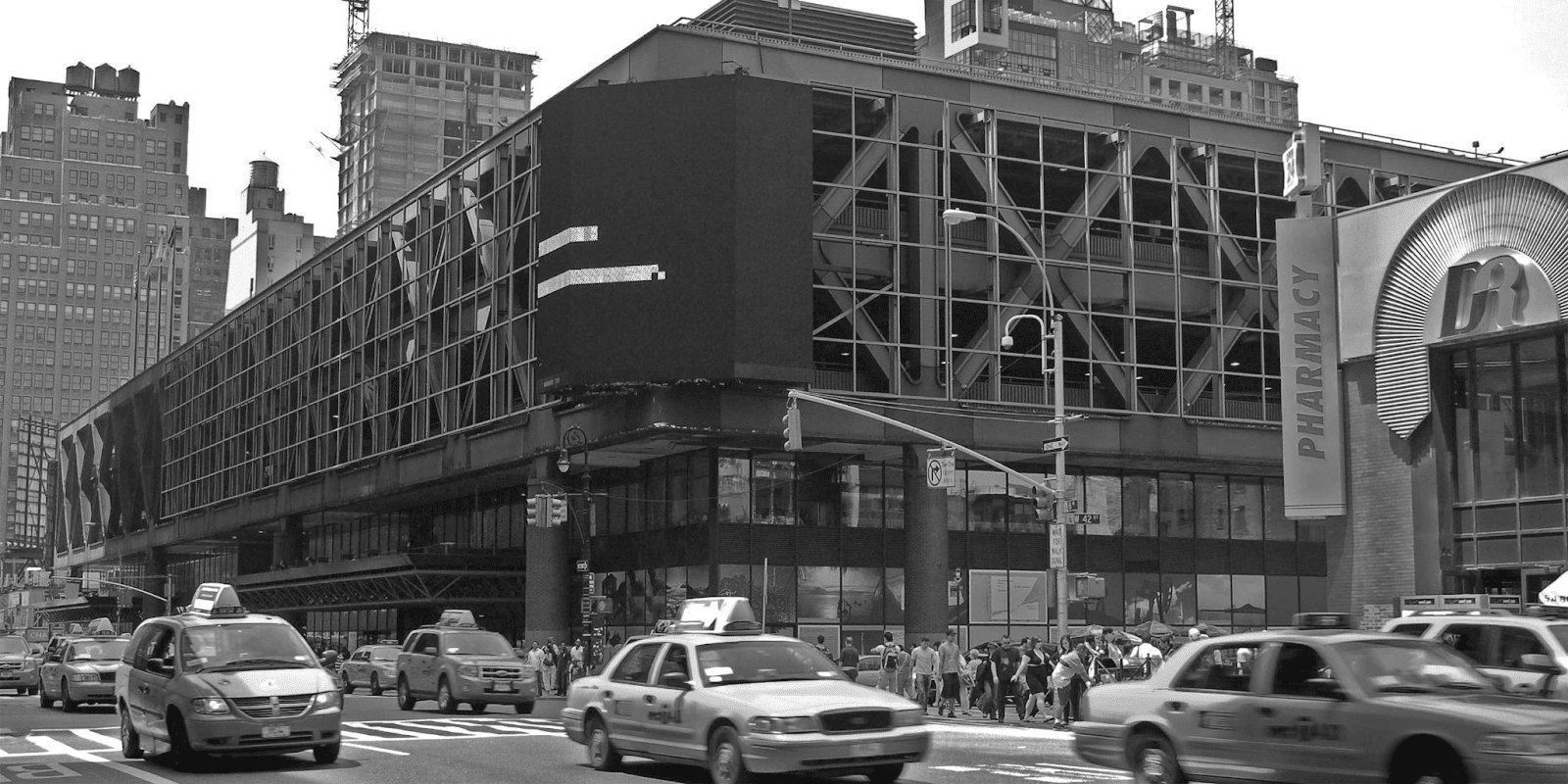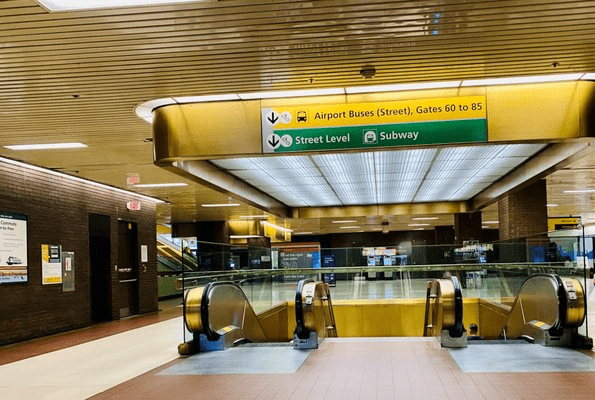This article tells about one of the busiest bus terminals worldwide. It serves about 8,000 buses, 225,000 people per day and over 65 million passengers per year. It is an arrival and departure point for suburban routes as well as long-distance bus services. Read more about the Port Authority on manhattan-future.

Establishment and building
This bus terminal is located at 625 Eighth Avenue between 40th Street and 42nd Street in Manhattan. It is managed by the Port Authority of New York and New Jersey (PANYNJ).
In 1939, after the opening of the Lincoln Tunnel, the city had a problem related to excessive traffic. Therefore, the local authorities came up with the idea of uniting all small bus stations into one central terminal, which would be located in the city center. The construction was approved in January 1947. Two months later, the New York Port Authority began purchasing land. Walter McQuade designed it and Vincent Marchesani was the assistant architect. The groundbreaking ceremony of the building took place on January 27, 1949. The first steel beams for the new bus station were installed in 1949. The steel frame was completed in March 1950. The construction was slightly delayed due to a workers’ strike in the middle of the same year. Despite this, it was completed by November 1, 1950. The official opening took place in 1950.
The style of the building is international. It was four-story, 200 by 800 feet (61 by 244 m), 65 feet (20 m) high, with a 500-space car park and 50 shops. The first floor contained 40 platforms for intercity buses and an auxiliary one for another 15 buses. The second floor was the main hall with ticket offices, waiting rooms, baggage check-in, restaurants, shops, escalators, etc. The third floor was the suburban hall with three sections. The fourth floor was intended for short-distance buses. During the first year of operation, it received about 40 million passengers. However, it is worth noting that from the first days, the terminal had problems with a significant overload.

Enlargement
It was decided to expand the terminal in 1959. Plans included the addition of a parking lot with 25 spaces for long-distance buses and 32 spaces for short-distance buses. A 1,000-space parking lot was also planned to be built above the roof. In December, the authorities allocated $24 million for the planned works. The construction process was finished in 1963. However, by 1966, there were traffic problems again.
In 1956, plans emerged for further expansion, which involved the construction of a second building north of the existing one. The project included the replacement of the curved facade with a glass curtain wall, as well as the appearance of a new part with four ground lobbies and one basement, improved access to the subway, replacement of escalators, etc. The northern part was opened in 1979. Such changes made it possible to increase traffic by 50 percent.
Later, a number of changes were also planned but they never became a reality. In 2013, the question of reconstruction or replacement of the terminal arose. In 2019, public hearings were held on this issue. It was decided whether the new terminal would be built on the existing site or elsewhere. In 2021, PANYNJ released plans for the terminal’s redevelopment, which called for the building to be reconstructed on the existing site.
In August 2022, PANYNJ hired architectural firm Foster + Partners and engineering firm Epstein Global to design the terminal. The following year, $65 million was allocated for it. It included 3.5 acres (1.4 ha) of parkland, a glass atrium and a main entrance on 41st Street. In addition, there were plans to build two office buildings at least 60 stories tall on 40th Street and 42nd Street. It is planned to be completed by 2032.